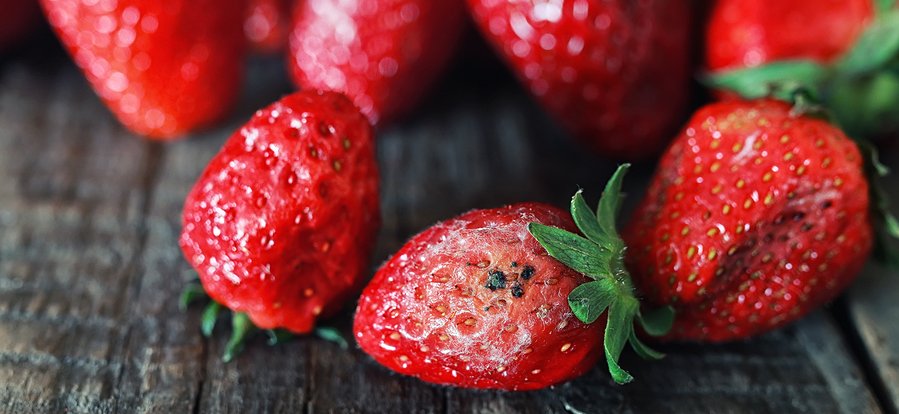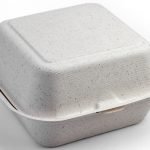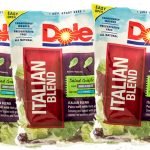If you haven’t had the experience of buying a quart of fresh, plump, delicious-looking berries only to find they’ve turned ugly gray and moldy a day or two later, then you haven’t shopped in a typical Warehouse store. While berries are particularly vulnerable to rapid spoiling, many types of foods go south faster than you can eat them. In fact, consumers throw out more than 25 percent of the produce they buy!1 Farrell, Mary H. J. “Can Special Food Storage Containers Keep Your Food Fresh Longer?” 21 July 2016. Consumer Reports. 21 December 2016. http://www.consumerreports.org/food/can-special-storage-containers-keep-your-produce-fresh-longer/ Is your only option to grow philosophical about the transience of earthly things every time your milk sours? Not at all. Instead, you can preserve your comestibles by trying these little-known tricks that really do work.
1. Buy Food-Preserving Products. The internet is filled with nifty things that purport to double the life of produce. Unfortunately, a Consumer’s Report study of seven such products—including Extra Life Produce Saver disks, Debbie Meyer UltraLight Greenboxes, Rubbermaid FreshWorks Food Storage Containers and similar containers by Oxo and Prepworks—found that none of the products kept food alive past two weeks, and the benefit provided by the special containers was marginal at best.
On the other hand, one product, the “Fridge Buddy” from Ecoroq, supposedly has been tested extensively by the University of South Florida, which gave it a thumbs-up after 2,300 hours of study. The USF study report says, “This product is safe, reliable and highly effective at removing water (humidity) and ethylene gas from refrigerators. This will result in better energy efficiency, longer shelf life of food and floral products, reduction of odor, reduction of mold, mildew and bacteria, which thrive in high humidity environments.”
The Fridge Buddy not only claims to preserve perishables for twice as long as regular containers, but it also ostensibly cuts down on energy costs.2 http://www.fridge-buddy.com/how-it-works For $19.95, you get a set of three free-standing filters that you place in various locations inside your fridge and freezer. The filters are filled with a mineral called guerite, which traps moisture and other gunk, keeping these things from degrading your food.
While the website doesn’t indicate who funded the supportive study, for less than the cost of a gourmet pizza you can test the product out yourself. The filters last six months provided that you take five minutes to prime them every 30 days.3 “Food Loss and Food Waste.” Food and Agricultural Organization of the United Nations. 21 December 2016. http://www.fao.org/food-loss-and-food-waste/en/2. Optimize the Fridge. You don’t need to buy anything fancy to give food a fighting chance to live a little longer. One cheap trick is to move a few things around in your fridge and do a little tweaking.4 Janoiak, Maria. “How to Organize Your Fridge to Keep Food Fresher, Longer (and Cut Your Energy Bill). 28 October 2014. Greatist. 22 December 2016. http://greatist.com/eat/ultimate-way-organize-your-fridge
First, line the bottom of your produce drawers with paper towel to absorb moisture.5 Jillee. “37 Tips for Keeping Food Fresh Longer.” 6 April 2013. One Good Thing. 22 December 2016. http://www.onegoodthingbyjillee.com/2013/04/37-tips-for-keeping-food-fresh-longer.html This will delay spoiling of vegetables and fruits. Then, move your apples, pears, peaches, and melons out of communal space. Many fruits emit ethylene gas, and that speeds up rotting of any foods, especially vegetables, nearby. Put fruits in their own crisper drawer. The only exception is potatoes, which actually last longer when an apple is nearby. Then again, potatoes prefer cool, not cold temperatures. Storing potatoes at cold temperatures converts their starch to sugar more quickly, which can affect their flavor, texture, and the way they cook. Better to put them in a paper bag (not plastic) and store them in a cool area like a pantry.
Make sure you have the fridge temperature set to 40 degrees and the freezer to zero. That said, it’s important to know that there are microclimates inside the refrigerator, and each food item has an optimal location. For instance, the warmest part of the fridge is the door, so you don’t want to store milk or other things that turn stinky and bad fast there. Instead, use the door for your condiments, juices, beverages, and other less sensitive items.
The arctic region of the fridge, comparatively, is the bottom, while the top shelves run warmer. Items that don’t need cooking, like hummus, leftovers, and jams, will do well in the warmer region on top. Raw meats and fish need to be on bottom shelves. Vegetables should go in their own crisper drawer, unwashed, and never mixed with fruits.
3. Use the Right Wrap. Just as it matters whether you wear pajamas or a suit to an interview, it matters what you wrap food items in before storing them. Saran is not the best solution for everything.
Lettuce and leafy greens, for instance, do best if wrapped in damp paper towel and then sealed in a plastic bag. Wrap mushrooms in dry paper towel or a paper bag and then put on the shelf with no further wrapping. Celery should be removed from the plastic bag and wrapped instead in foil, which allows gases to escape.6 Jones, Eleanor. “14 genius hacks to keep your healthy food fresh longer.” 28 September 2015. Cosmopolitan. 22 December 2016. http://www.cosmopolitan.co.uk/body/diet-nutrition/a38816/keep-your-healthy-food-fresh-for-longer/ Garlic, on the other hand, should never go in a sealed container. Instead, leave it as is and store it in a wire basket or if you must, a paper bag.
4. Give Produce a Bath Wash berries in vinegar before storing to keep them alive an extra few days. The vinegar kills any resident bacteria that might expedite rotting. Lettuce that’s wilted has second life when bathed in ice water. If you want fresh herbs to last longer, stand them up in a small vase or glass filled with water like a bouquet of flowers. You can do the same thing with leafy greens like chard, kale, and collards, but store these in the fridge, vase and all.
The bottom line is that while you can’t stop the process of decay, you can do easy things to help food last long enough to use and consume it. Not to sound like a mother scolding you to finish your meal, but perhaps mother was right: given that 1.3 billion tons of food goes to waste every year while nearly 800 million people worldwide live on the verge of starvation, paying attention to reducing food waste in your own home seems like a reasonable thing to do.7 “Hunger Statistics.” World Food Programme. 22 December 2016. http://www.wfp.org/hunger/stats
References
| ↑1 | Farrell, Mary H. J. “Can Special Food Storage Containers Keep Your Food Fresh Longer?” 21 July 2016. Consumer Reports. 21 December 2016. http://www.consumerreports.org/food/can-special-storage-containers-keep-your-produce-fresh-longer/ |
|---|---|
| ↑2 | http://www.fridge-buddy.com/how-it-works |
| ↑3 | “Food Loss and Food Waste.” Food and Agricultural Organization of the United Nations. 21 December 2016. http://www.fao.org/food-loss-and-food-waste/en/ |
| ↑4 | Janoiak, Maria. “How to Organize Your Fridge to Keep Food Fresher, Longer (and Cut Your Energy Bill). 28 October 2014. Greatist. 22 December 2016. http://greatist.com/eat/ultimate-way-organize-your-fridge |
| ↑5 | Jillee. “37 Tips for Keeping Food Fresh Longer.” 6 April 2013. One Good Thing. 22 December 2016. http://www.onegoodthingbyjillee.com/2013/04/37-tips-for-keeping-food-fresh-longer.html |
| ↑6 | Jones, Eleanor. “14 genius hacks to keep your healthy food fresh longer.” 28 September 2015. Cosmopolitan. 22 December 2016. http://www.cosmopolitan.co.uk/body/diet-nutrition/a38816/keep-your-healthy-food-fresh-for-longer/ |
| ↑7 | “Hunger Statistics.” World Food Programme. 22 December 2016. http://www.wfp.org/hunger/stats |












This article arrived right on
This article arrived right on time! I was given a surplus of veggies yesterday, picked out of a garden. I was trying to decide what to do and this article was in my inbox… Thank you!
Super article,thank you, but
Super article,thank you, but,shouldn’t it be the other way around? ‘The arctic region of the fridge, comparatively, is the bottom, while the top shelves run warmer. ‘ Common sense says, If that were so, how come the freezer compartment is at the top? As well,If the bottom is colder,then the delicate veg&fruits in those marked drawers would ‘suffer’ , & the fridge makers would be lambasted, don’t you think? cheers
The drawers tend to control
The drawers tend to control for temperature, but now new fridges are starting to put one arctic shelf at the bottom for meats. Finally indeed!
I love my Berry Breeze! Use
I love my Berry Breeze! Use rechargeable batteries. Easy, not that expensive, totally worth it.
I read the above article & at
I read the above article & at your recommendation I ordered the Fridge Buddy. I received my credit card statement & I was charged $22.70. The phone number associated with them is answered by a man who say he no longer is associated with them. They do not return my emails questioning them about my purchase. I tell you this so you won’t recommend it to anyone else. It has been a frustrating experience & now I must pursue trying to get a refund. They are bogus!
Wow, thank you for letting us
Wow, thank you for letting us know! Sorry to hear about your experience. Probably the best would be to purchase this on Amazon, which offers guarantees: http://www.amazon.com/Fridge-Buddy-Favorite-Foods-Longer/dp/B00V5DYC8M.